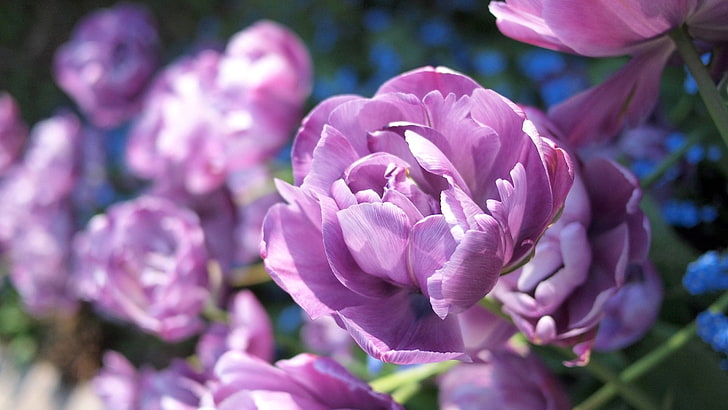

Peony
(#66871045)
blossoms with the power to move gods and kings
Click or tap to view this dragon in Predict Morphology.
Energy: 46/50

Expand the dragon details section.
Collapse the dragon details section.
Personal Style

Ancient dragons cannot wear apparel.
Skin

Scene

Measurements
Length
10.62 m
Wingspan
7.57 m
Weight
7868.69 kg
Genetics
Pearl
Wasp (Gaoler)
Wasp (Gaoler)
Pearl
Rosette (Gaoler)
Rosette (Gaoler)
Bubblegum
Blossom (Gaoler)
Blossom (Gaoler)
Hatchday
Breed
Eye Type
Level 1 Gaoler
EXP: 0 / 245


STR
7
AGI
5
DEF
7
QCK
5
INT
5
VIT
9
MND
7
Biography

Peony
Paeonia, παιωνία, 牡丹, 富貴花, 花王
physician, flower of riches and honour, king of flowers
Paeonia, παιωνία, 牡丹, 富貴花, 花王
physician, flower of riches and honour, king of flowers
The peony or paeony is a flowering plant in the genus Paeonia, the only genus in the family Paeoniaceae. Peonies are native to Asia, Europe and Western North America. Scientists differ on the number of species that can be distinguished, ranging from 25 to 40, although the current consensus is 33 known species.
From Old English peonie, peonia et al., from Latin paeōnia; later reinforced by Anglo-Norman peonie, Old French peone, from Latin paeōnia, from Hellenistic Ancient Greek παιωνία (paiōnía), from Ancient Greek Παιών (Paiṓn, “Paean, the physician of the gods”)/παιών (paiṓn, “a physician”).
The peony is among the longest-used flowers in Eastern culture. Along with the plum blossom, it is a traditional floral symbol of China, where the Paeonia suffruticosa is called 牡丹 (mǔdān). It is also known as 富貴花 (fùguìhuā) "flower of riches and honour" or 花王 (huawang) "king of the flowers", and is used symbolically in Chinese art. In 1903, the Qing dynasty declared the peony as the national flower. The ancient Chinese city Luoyang has a reputation as a cultivation centre for the peonies. Throughout Chinese history, peonies in Luoyang have been said to be the finest in the country. Dozens of peony exhibitions and shows are still held there annually.
In the Middle Ages, peonies were often painted with their ripe seed-capsules, since it is the seeds, not the flowers, which are medically significant. Ancient superstition dictated that great care be taken not to be seen by a woodpecker while picking the plant's fruit, or the bird might peck out one's eyes.
The red flowers of the species Paeonia peregrina are important in Serbian folklore. Known as Kosovo peonies (косовски божур, or kosovski božur), they are said to represent the blood of Serbian warriors who died when fighting in the Battle of Kosovo in June 1389.
Mischievous nymphs were said to hide in the petals of the Peony, giving it the meaning of Shame or Bashfulness in the Language of Flowers. While the peony takes several years to re-establish itself when moved, it blooms annually for decades once it has done so.
Peonies tend to attract ants to the flower buds. This is due to the nectar that forms on the outside of the flower buds, and is not required for the plants' own pollination or other growth. The presence of ants is thought to provide some deterrence to other harmful insects though, so the production of ant-attracting nectar is plausibly a functional adaptation. Ants do not harm the plants.
Peonies are a common subject in tattoos, often used along with koi-fish. The popular use of peonies in Japanese tattoo was inspired by the ukiyo-e artist Utagawa Kuniyoshi's illustrations of Suikoden, a classical Chinese novel. His paintings of warrior-heroes covered in pictorial tattoos included lions, tigers, dragons, koi fish, and peonies, among other symbols. The peony became a masculine motif, associated with a devil-may-care attitude and disregard for consequence.
The root, bark, seed and flowers were all believed to have medicinal uses in eastern Asia and Europe. The herb known as Paeonia, in particular the root of P. lactiflora (Bai Shao, Radix Paeoniae Lactiflorae), has been used frequently in traditional medicines of Korea, China and Japan. In Japan, Paeonia lactiflora used to be called ebisugusuri ("foreign medicine"). Pronunciation of 牡丹 (peony) in Japan is "botan." In kampo (the Japanese adaptation of Chinese medicine), its root was used as a treatment for convulsions. It is also cultivated as a garden plant. In Japan Paeonia suffruticosa is called the "King of Flowers" and Paeonia lactiflora is called the "Prime Minister of Flowers."
In China, the fallen petals of Paeonia lactiflora are parboiled and sweetened as a tea-time delicacy. Peony water, an infusion of peony petals, was used for drinking in the Middle Ages. The petals may be added to salads or to punches and lemonades.
Ancient Greeks and Christians from the Middle Ages believed peonies were a symbol for healing. They were used to treat stomach pains, bladder issues, jaundice and even nightmares. Peonies are also extensively grown as ornamental plants for their very large, often scented flowers.
There are two myths of origin for the peony in European culture. In one the origin of compassion can be found; in the other the more negative connotation that developed in the Victorian age is displayed.
In the first tale, the peonies get their name from the Greek word Paeon. In Greek mythology, Paeon was the physician to the gods who angered his teacher Asclepius after he extracted a milky liquid from the root of a peony that cured Pluto. Asclepius was the god of medicine and healing. He threatened to kill Paeon out of jealousy because he was outsmarting his teacher. Zeus saved him by turning him into a beautiful flower, the peony.
Another myth links the name peony back to a nymph named Paeonia whose beauty attracted the attention of Apollo. Out of spite, Aphrodite turned her into a peony. This legend is likely what led to the flower’s meaning of poor luck in the Victorian age.
Click or tap a food type to individually feed this dragon only. The other dragons in your lair will not have their energy replenished.
This dragon doesn't eat Insects.
Feed this dragon Meat.
This dragon doesn't eat Seafood.
Feed this dragon Plants.
Exalting Peony to the service of the Lightweaver will remove them from your lair forever. They will leave behind a small sum of riches that they have accumulated. This action is irreversible.
Do you wish to continue?
- Names must be longer than 2 characters.
- Names must be no longer than 16 characters.
- Names can only contain letters.
- Names must be no longer than 16 characters.
- Names can only contain letters.











